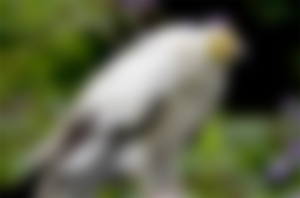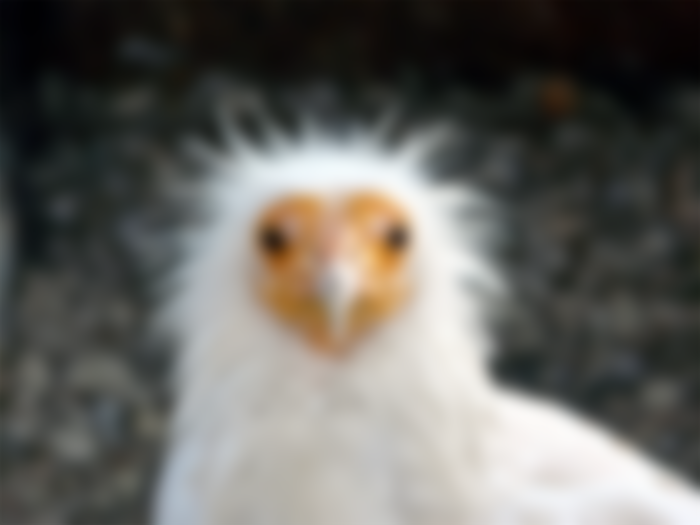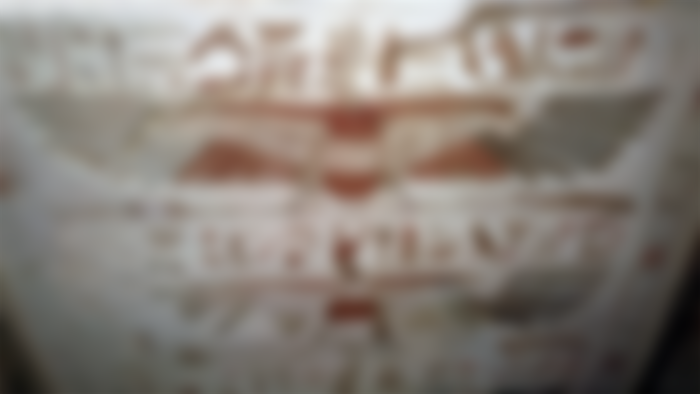Egyptian Vulture & Pharaoh's Two Ladies - Ornithology & Ancient Mythology
We will return to an old topic of mine, Ancient Egypt - but we will start that journey into the past with a threatened species from contemporary wildlife. After that we'll go back to Pharaonic time, to Nekhbet and Wadjet, Pharaoh's Two Ladies, and the Pharaonic crowns of old Egypt.
Egyptian Vulture
The Egyptian vulture (Neophron percnopterus) has great cultural-historical significance. The species is found in the Mediterranean area and eastwards all the way to India. Unfortunately, the number of individuals of this species has decreased drastically in a few decades; today, the Egyptian vulture is an acutely endangered species.

In English, this bird of prey is called "Egyptian vulture" and sometimes Pharaoh's chicken. It is considered to belong to the oldest branch of vulture evolution.
The name Neophron, comes from Greek mythology and there is a macabre story about this.
Aegypios, Neophron's friend, had a love story with Timandra, Neophron's mother. Neophron was upset about this relationship and wanted revenge. He, in turn, managed to seduce Aegypio's mother, Bulis, and get her to enter the dark room where Timandra and Aegypios would soon meet. He then delayed his mother's entry into the room while forcing Aegypios to enter and, by mistake, have sex with his own mother. When Bulis, Aegypio's mother, discovered this, she stuck out her son's eyes and then committed suicide.
Aegypius asked Zeus for revenge, whereupon Zeus turned Aegypios and Nephron into vultures.

The second part of the name Neophron percnopterus, means "black-winged". The name comes from Linnaeus, who in 1758 (in the tenth edition of Systema Naturae), gave the bird the systematic name Vultur percnopterus.
Calling this vulture "black-winged" sounds excessive - but even though an adult bird is mainly white, it has black feathers on its wings.
In ancient Egypt, the vulture was a royal symbol, consecrated to Isis, and Pharaonic law protected it. At that time, it is said to have been a common sight on the streets of cities.

The vulture was also associated with the goddesses Mut and Nekhbet, and it also exists as a hieroglyphic sign; it stands for the glottal sound / ɑː /.
In the Bible, the Egyptian vulture is mentioned by its Hebrew name, racham, or rachamah. In Arabic it is called al-rakhmat al-misriyya.
Pharaoh's Two Ladies: Nekhbet & Wadjet
Nekhbet is a very old Egyptian goddess, who eventually came to become the protector of Upper Egypt (South Egypt) - and when Egypt was unified, she remained one of nebty, Pharaoh's two ladies, symbolising Upper Egypt. She was also associated with the crown of Upper Egypt: hedjet, the white crown.
The other of Pharaoh's two ladies was Wadjet, the protector of Lower Egypt (North). She was associated with the royal cobra and with the crown of Lower Egypt: deshret, the red crown.
Pharaoh had a double-crown to represent his position as ruler over both the realms, upper and lower Egypt. It was called pschent, and was a combination of hedjet and deshret, the white crown and the red crown.
Mut
Mut was the goddess of Thebes. She was associated with motherhood, and also with the vulture. So their word for vulture and mother were one and the same: mwt. Over time, the importance and characteristics of Mut changed and she came to be associated with other symbols as well.
Copyright © 2019, 2022 Meleonymica/Mictorrani. All Rights Reserved.
All my articles about Egypt can be found here.
In my INDEX, you can find all my writings on Read.Cash, sorted by topic.
Images, in order of appearance
Egyptian Vulture. Photo: Wildfaces/Pixabay, CC0/Public Domain.
Egyptian Vulture. Photo: fda54/Pixabay, CC0/Public Domain. (Also lead image.)
From a temple in Kom Ombo. Photo: LorettaLynn/Pixabay, CC0/Public Domain.



I love reading these kinds of articles! I'm always learning something new.